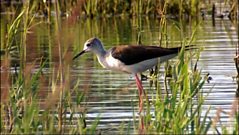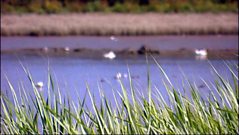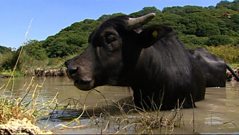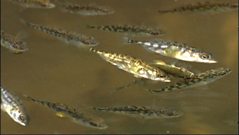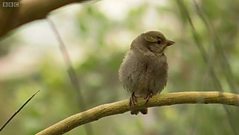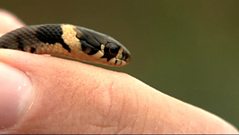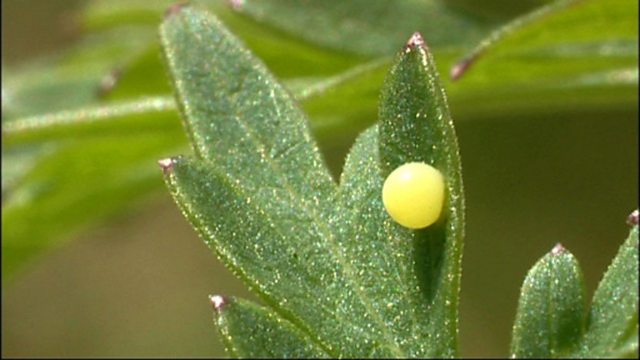
Signs and portents
Getting a good view of fluttering swallowtail butterflies can be tricky.
There is so much to look at Mike Dilger doesn't know where to turn - should he watch dragonflies or butterflies? - so he is going to focus on the butterflies. A swallowtail zips by. They are so distinctive in the air - a big yellow butterfly - but he is only getting fleeting views. Mike meets local butterfly enthusiast Bernard Watts to help him track the swallowtail down. The place to stop is where there are nectar plants like yellow flag iris, meadow thistle or ragged robin. The butterflies are so big they weigh down lighter plants like ragged robin, and flutter frantically, so sometimes you can't get a clear view of them. A nectar plant is something the adult butterflies come to for a feed. Females lay their eggs on a very specific plant - the milk parsley. This is their food plant - it's what the caterpillars eat when they emerge from the egg. The food plant is the crucial one. The butterfly can use a range of nectar plants, but there is just one food plant. The conditions at How Hill are perfect for milk parsley, which is why the swallowtail is here. Bernard finds a swallowtail egg on the milk parsley. Another adult shoots by but doesn't land.
Duration:
This clip is from
More clips from Summer: Wetland
-
![]()
Long-legged lovelies
Duration: 02:38
-
![]()
Teifi Marshes
Duration: 02:08
-
![]()
Stick trick
Duration: 01:56
-
![]()
Great grazers
Duration: 01:50
More clips from Nature's Calendar
-
![]()
Bizarre behaviour—Series 1, Summer: Parks and Gardens
Duration: 01:27
-
![]()
Hot-housing sparrows—Series 1, Summer: Parks and Gardens
Duration: 01:42
-
![]()
Long-legged lovelies—Series 1, Summer: Wetland
Duration: 02:38
-
![]()
Young grass snake—Series 1, Summer: Parks and Gardens
Duration: 01:30

